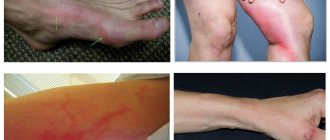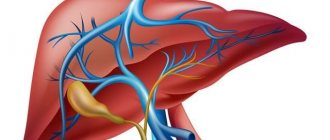What causes atherosclerosis?
Blockage of blood vessels in the penis can occur for various reasons. The main provoking factors include:
- arterial hypertension,
- diabetes,
- injuries to the abdomen and groin area,
- physical inactivity,
- alcohol and smoking abuse,
- chronic lack of sleep,
- genetic predisposition to the formation of vascular plaques.
When the male body is exposed to several negative factors from this list at once, the likelihood of blockage of the vessels of the penis increases.
Atherosclerosis, arterial hypertension, drugs and erectile dysfunction
Drug therapy is the cause of one in four cases of erectile dysfunction
Erectile dysfunction (ED) is the inability to achieve and/or maintain an erection sufficient for satisfying sexual activity. The term was proposed in 1988 by the US National Institutes of Health instead of the word “impotence”, and by 1992 it was adopted by international organizations of urologists and andrologists. This definition more fully and accurately characterizes the variety of expressed sexual disorders. It includes not only the inability to keep the penis erect, but also a violation of orgasm (which is the highest degree of voluptuous sensation that occurs at the moment of completion of sexual intercourse) and a weakening of libido (sexual desire).
If previously various psychological problems were considered the main cause of ED, in recent years this opinion has changed. Thanks to studies that have clarified the true mechanism of erection, it has been shown that ED in 80% of cases occurs as a complication of various somatic diseases (Carrier S. et al., 1993; Benet AE et al., 1995). The presence of ED is often associated with chronic diseases, primarily arterial hypertension (AH), diabetes mellitus and atherosclerosis (Feldman HA et al., 1994). With atherosclerosis, the walls of blood vessels lose their elasticity and narrow due to the atherosclerotic plaques covering them, which leads to the development of heart attacks and strokes. Atherosclerotic damage to the vessels of the penis prevents sufficient blood flow into the organ and causes ED. This disease is associated with approximately 40% of cases of ED in men over 50 years of age. Often, various manifestations of atherosclerosis - for example, coronary heart disease (CHD) and ED - develop in parallel. Thus, according to preliminary data from Winstrup R., the frequency of sexual intercourse in men after the onset of heart disease decreases from 6.9 + 4.3 per month to 2.8 + 2.0, and the frequency of ED increases from 20 to 65%. Moreover, there is evidence of a correlation between sexual activity and the number of affected coronary arteries (Greenstein A. et al., 1997).
High blood pressure (BP) can cause ED, regardless of whether a person suffers from atherosclerosis or not. If hypertension is not treated for a long time, the walls of blood vessels, constantly exposed to increased blood pressure, become dense and inelastic, and the vessels cannot supply the organs with the necessary amount of blood.
25% of cases of ED are in one way or another associated with taking medications (Slag MF et al., 1983; O'Keefe M. et al., 1995). These data are based on empirical observations, case reports, pre- and post-marketing studies of drugs (Goldstein I. et al., 1983). However, very few patients are aware of the possibility of impaired potency under the influence of medications. According to a public survey examining sexual activity in older men (Hamdy FC et al., 1997), 64% of men in Spain, 51% in France, and 38% in the UK are aware of the possibility of medications affecting sexual function.
However, a patient who suspects that drug treatment is causing his sexual problems may stop taking the medication or reduce the dose without telling the doctor. Thus, according to Arabidze G.G. (1999), only 30% of patients with arterial hypertension in Russia continue to take prescribed medications a year after the selection of antihypertensive therapy, and in 15% of cases the reason for refusing therapy was sexual disorders.
The main groups of drugs used in cardiology, which are believed to have a negative effect on male sexual function, are presented in the table.
ED is associated with the use of digoxin (Guay AT, 1995), antihypertensive drugs - clonidine, thiazide diuretics, β-blockers (Buffum J., 1986), antihyperlipidemic drugs, which have different effects on libido, erection and ejaculation. Drug-induced priapism, which is often followed by ED, includes approximately 30% of cases of priapism and is caused primarily by drugs that affect α-adrenergic receptors - antihypertensive drugs (mainly prazosin), as well as heparin (Baanos JE et al., 1989).
Most often, the occurrence of ED is associated with the use of various antihypertensive drugs. Thus, the Massachusetts Male Aging Study (MMAS, 1994) found that the incidence of ED among hypertensive men receiving drug therapy was 15%. Until now, however, it remains unclear whether this problem is associated with hypertension itself or with antihypertensive therapy, since not all antihypertensive drugs cause ED. In particular, to date there is no indication that calcium antagonists and ACE inhibitors can negatively affect male sexual function. Double-blind randomized study Fogari R. et al. (1998) showed that the frequency of sexual intercourse per month during atenolol therapy decreased from 7.8 to 4.5 after a month and to 4.2 after 4 months. During therapy with lisinopril, the corresponding indicators were 7.1, 4.0 and 7.7, that is, sexual activity was completely restored by the end of the four-month observation. The percentage of patients who reported sexual disorders was also significantly higher during therapy with atenolol compared with the lisinopril group (17% and 3%, respectively). As for angiotensin receptor inhibitors, a randomized double-blind crossover study by Fogari R. et al. (1999) showed that while taking valsartan, there was even a tendency to increase sexual activity in men. The study involved 94 hypertensive men aged 40–49 years with newly diagnosed arterial hypertension who had not previously been treated. After taking placebo for a month, patients received the angiotensin receptor antagonist valsartan (Diovan) or the α-, β-blocker carvedilol for 16 weeks. Then, after taking placebo for 4 weeks, patients were assigned to another study drug and followed for an additional 16 weeks. In the group of patients taking valsartan after a month, the number of sexual intercourses per week decreased from 2.1 to 1.6; at the end of 16 weeks, the sexual activity score was 2.7, and after switching to carvedilol it dropped to 0.9 by the end of the study. In the carvedilol group, the level of sexual activity decreased from 2.2 to 1.1 at the end of the first month of treatment and to 0.9 at the end of 16 weeks of observation, and after switching to valsartan it increased to 2.6.
Thus, although ED during antihypertensive therapy may occur due to a decrease in blood flow to the penis, it is unclear, however, whether this decrease is a consequence of the decrease in systemic blood pressure with effective antihypertensive therapy, the result of vascular disease, or some other unknown factor at work. side effects of the drug (Bansal S., 1988).
The latter assumption is supported by the results of a study by Muller SC et al. (1991), who assessed the presence of ED in 472 patients with hypertension. According to duplex sonography, patients receiving antihypertensive therapy showed a worse arterial response to intracavernosal papaverine administration than those who did not receive drug treatment. The vascular response to papaverine was more favorable in patients receiving a combination of a beta-blocker and a vasodilator, and the use of thiazide diuretics as monotherapy or in combination with other antihypertensive agents worsened arterial function. However, the level of blood pressure reduction did not correlate with the ability to achieve a full erection after intracavernous injection of papaverine. In the experiment Lin SN et al. (1988) injection of low doses of clonidine into the pudental artery of dogs, which were unable to affect systemic blood pressure, suppressed erection induced by electrical stimulation. The authors believe that this may be due to local narrowing of the penile arteries, mediated by the effect of clonidine on α-adrenergic receptors.
Among antihypertensive drugs, thiazide diuretics most reliably cause ED. The multicenter, randomized, placebo-controlled TAIM study (1991) showed that ED was observed in 28% of patients receiving chlorthalidone for 6 months. In a randomized placebo-controlled trial, Chang SW et al. (1991), dedicated to assessing the effect of thiazide diuretics on the quality of life in mild hypertension in men aged 35 to 70 years, after 2 months from the start of therapy, patients receiving diuretics reported significantly more sexual dysfunction compared to the control group (including decreased libido, difficulty achieving and maintaining an erection, ejaculation disorders). Statistical analysis showed that ED was not due to hypokalemia or decreased systemic blood pressure.
To date, there are many reports of the occurrence of erectile dysfunction during therapy with β-blockers. At the same time, non-selective β-blockers cause sexual dysfunction to a greater extent than selective ones, this has been proven both experimentally and during clinical observations. For example, in the experiment Smith E. et al. (1990) 30 minutes after a single subcutaneous injection of propranolol and pindolol (but not atenolol) into a male rat, a dose-dependent inhibition of male sexual behavior and ejaculation was observed in the rat. This may be due to the fact that β-adrenergic receptors cause relaxation of the corpora cavernosa (Ferini-Strambi L. et al., 1992), or to the effect of β-blockers on the level of sex hormones (Rosen RC et al., 1988). It is also possible that the influence of non-selective beta-blockers is due to their central effects. This assumption is supported by experimental data according to which the administration of propranolol and pindolol (but not atenolol and metoprolol) directly into the ventricles of the brain was accompanied by suppression of sexual activity in animals (Smith E. et al., 1996). The authors suggest that this effect may be mediated by the interaction of non-selective blockers with β1- and β2-adrenergic receptors or with serotonin receptors in the central nervous system.
According to clinical data (Due DL et al., 1986), propranolol caused sexual dysfunction in 9% of cases. Kostis JB et al. (1990), who conducted a prospective placebo-controlled study, proved that propranolol (as well as clonidine) reliably suppressed spontaneous nocturnal erections. According to Croog SH et al. (1988), in a comparative assessment of the effects of captopril, methyldopa and propranolol on sexual dysfunction during a 24-week treatment period, the highest incidence of sexual dysfunction was observed in the group of patients receiving propranolol.
Similar results were obtained when studying the effect of the cardioselective β-blocker atenolol on male sexuality. During atenolol therapy, spouses of young patients reported significantly lower sexual satisfaction compared to wives of patients receiving nifedipine (Testa MA et al., 1991). Suzuki H. et al. (1988) also reported the occurrence of sexual dysfunction during long-term (for 1 year) therapy with atenolol and noted a moderate decrease in serum testosterone levels. According to Wassertheil-Smoller S. et al. (1991), obtained during the multicenter randomized, placebo-controlled TAIM study, erection-related problems were detected in 11% of patients receiving atenolol for 6 months, which was significantly more often than in the placebo group.
In the era of evidence-based medicine, the TOMHS, a multicenter, double-blind, randomized, placebo-controlled trial that included 557 hypertensive men aged 45–69 years, certainly deserves the most attention. Patients received placebo or one of five drugs (acebutolol, amlodipine, chlorthalidone, doxazosin, or enalapril). Sexual function was assessed by interview with a physician at baseline and then annually during the study. Initially, 14.4% of men reported problems with sexual function; 12.2% of men had problems obtaining and/or maintaining an erection, which were correlated with age, systolic blood pressure and previous antihypertensive therapy. After 24 and 48 months of follow-up, the incidence of ED was 9.5% and 14.7%, respectively, and correlated with the type of antihypertensive therapy. Patients treated with chlorthalidone reported a significantly higher incidence of ED at 24 months compared with the placebo group (17.1% vs. 8.1%, P = 0.025). However, after 48 months, the incidence of ED was almost the same in both groups; the differences in the groups of patients receiving placebo and chlorthalidone were not significant. The lowest incidence of ED was observed when taking doxazosin, but even here no significant differences were obtained from the placebo group. The incidence of ED for acebutolol, amlodipine and enalapril was the same as in the placebo group. In many cases, ED did not require discontinuation of drug therapy. The disappearance of ED in men who initially suffered from it was observed in all groups, but this trend was most pronounced among patients taking doxazosin. Thus, the long-term incidence of ED in treated hypertensive patients is relatively low. ED most often occurs during therapy with chlorthalidone. According to the authors, the similar incidence of ED in the placebo group and with long-term use of the most active antihypertensive drugs allows one to reasonably argue against considering sexual problems in hypertensive men to be a consequence of drug therapy (Grimm et al., 1997).
When choosing antihypertensive therapy, it should also be taken into account that not all β-blockers can negatively affect the sexual function of men. In particular, the side effects of the lipophilic cardioselective beta-blocker bisoprolol were studied in post-marketing studies that included 152,909 patients. Side effects were detected in 11.2% of patients, but only 2.2% of patients needed to discontinue the drug, and no cases of ED were reported at all (Buchner Moll et al., 1995). The absence of a negative effect of bisoprolol on male sexuality is probably due to its high cardioselectivity, which allows the drug to be used in situations where β-blockers are usually contraindicated - with dyslipidemia, diabetes mellitus type 1 and 2, in patients with broncho-obstructive diseases and obliterating diseases of the vessels of the lower extremities. Moreover, it has been shown that the cardioselective β-blocker bisoprolol not only does not worsen the sexual function of men, but even has a beneficial effect on sexual abilities (erectile strength during sexual intercourse, satisfaction with one’s own sexuality - Broekman S. R. et al., 1992).
Due to the widespread use of lipid-lowering drugs in patients with proven coronary artery disease, reports of their inherent side effects have increasingly begun to appear; Moreover, while the effect of fibrates on male sexual function has been known for a long time, the effect of statins is only being studied. Bruckert E. et al. (1996) found that potency disorders were significantly more common among patients receiving lipid-lowering drugs (12% compared to 5.6% in the control group, P = 0.0029). Multivariate analysis showed that ED was dependent on treatment with both fibrate derivatives and statins. A report from the Australian Drug Adverse Events Committee cited 42 cases of erectile dysfunction caused by simvastatin occurring between 48 hours and 27 months after the start of treatment (Boid IW, 1996). In 35 cases, simvastatin was the only drug that patients took; in 4 patients, ED developed again when treatment was resumed. At the same time, as in the case of antihypertensive drugs, these data need careful verification, since, as previously shown, patients with coronary artery disease often develop ED without treatment.
Thus, drug therapy is responsible for every fourth case of ED. The possible effect of a drug on sexual function should be openly discussed with patients, who, in turn, should report any side effects of the drug. When prescribing drug therapy, attention should be paid to the medical history (including the presence of problems in sexual life); if there is an increased risk of developing ED, you should not prescribe drugs that are known to cause it (such as thiazides). When treating arterial hypertension in this situation, preference should be given to calcium antagonists, angiotensin-converting enzyme inhibitors and α-blockers, which have less effect on the sexual sphere (Weiss RJ, 1991), or angiotensin receptor inhibitors, which, apparently, can even slightly increase sexual activity. If it is necessary to prescribe β-blockers (arterial hypertension, coronary artery disease, rhythm disturbances), bisoprolol becomes the drug of choice in patients with an increased risk of developing ED.
A. L. Vertkin, Doctor of Medical Sciences, Professor
The influence of drug therapy on the sexual function of men
| Group of drugs | Libido | Erection | Ejaculation and orgasm |
| α-agonists (clonidine) | — | — | — |
| β-blockers (non-selective) | — | — | — |
| Diuretics (thiazides) | — | — | |
| Cardiac glycosides (digoxin) | — | — | |
| Antihyperlipidemic agents | — | — |
Return
Manifestations
Symptoms of the initial stage of vascular blockage and the development of vascular impotence are:
- weak unstable erection with strong sexual arousal,
- early ejaculation,
- decreased duration of spontaneous erections at night and in the morning.
Unlike psychogenic, vascular impotence does not occur immediately after a decrease in the lumen of the vessels supplying the penis. Over a long period of time, a man has misfires in bed, to which he does not attach much importance. Then the situation gradually worsens: problems with erectile function arise more and more often. In such cases, it is necessary to consult a urologist-andrologist as soon as possible.
Preparation rules and procedure
Preparation for the ultrasound examination procedure consists of the following:
- 1-2 days before the test you need to completely eliminate alcohol from your diet;
- immediately before the procedure, you need to thoroughly wash the genital organ;
- It is advisable not to urinate 1-2 hours before the test.
Ultrasound scanning of the penis is performed when it is exposed and erect. To achieve an erection, special medications are injected into the penis. After the procedure, the patient must achieve ejaculation through self-stimulation, which is necessary for the natural release of auxiliary drugs. Before the diagnosis begins, the patient lies on the couch on his back. The doctor injects stimulating drugs into the penis, and after about 20-25 minutes an erection occurs. You can also achieve an erection by taking stimulant drugs internally: Viagra, Levitra and others. After an erection occurs, the doctor places an ultrasound sensor on the patient’s penis and scrotum in a certain sequence every 5 minutes (depending on the erection phase) for 25 minutes.
Treatment methods
Various techniques are used to treat blocked blood vessels in the penis.
- Drug therapy - helps control blood pressure, blood cholesterol levels, and restore proper metabolism. Preparations specially selected by the doctor help to increase the lumen of blood vessels, loosen cholesterol deposits and remove them from the body.
- Surgical intervention is necessary for severe arterial stenosis, in which the lumen of the vessel is narrowed to 70%. During the operation, either only the cholesterol plaque or the entire problem area is removed, followed by installation of a transplant.
The specialists of our andrology clinic in Moscow will help you get rid of blockage of blood vessels in the penis and its consequences - prostate adenoma and vascular impotence. Patients are seen by experienced urologists-andrologists. Additional information and registration for consultations can be made by phone.
What is examined during ultrasound examination of the vessels of the penis
During an ultrasound scan, the doctor examines the cavernous arteries, blood vessels, as well as the speed of blood inflow and outflow. Indicators must be compared with standards.
Deviations from the norms of ultrasound indicators:
- Echogenicity – decreased may indicate the development of acute cavernitis; increased echogenicity is observed in patients with cavernous fibrosis.
- The structure of the cavernous bodies must be homogeneous. Heterogeneity is characteristic of focal cavernous fibrosis.
- The tunica albuginea of the organ - thickening of the tissue indicates the development of Peyronie's disease.
- echogenicity of the walls of the cavernous arteries is usually observed in patients with diabetic vascular disease.
The diameter of the cavernous arteries is normal 0.2-1.4 mm. Narrowing of the lumen is a sign of autoimmune or atherosclerotic pathology. Diameter expansion is inherent in vascular development anomalies.
Ultrasound diagnostics is carried out so that the doctor can accurately determine the type of vascular disorder of the penis and select effective therapy.
Surgery
Significant cholesterol plaques and the ineffectiveness of drug therapy are a prerequisite for surgery, one of the types of which is penile prosthesis.
Surgical methods for eliminating atherosclerosis of the penis are used in case of significant proliferation of cholesterol plaques, blockage of blood vessels and ineffectiveness of drug therapy. The main methods of operational influence:
- Revascularization. Creating a bypass for blood circulation.
- Stenting. Installation of a special frame supporting the inner surface of the vessel.
- Shunting. Direct connection between a healthy vessel and the penis, excluding the affected area from the blood circulation.
- Penile prosthetics. Implantation of artificial materials to restore erection.
Folk recipes
Home treatment methods are used exclusively as a concomitant treatment in consultation with the attending physician. The doctor determines the duration of the course, components and method of use. Basic recipes:
- dandelion juice or fresh parsley;
- infusion of Sophora japonica, ginseng root;
- mint or ginger tea;
- St. John's wort decoction;
- decoction of oak bark, strawberry leaves;
- red clover infusion;
- baths with nettle leaves.
Diagnostic measures
The initial stage of diagnosing the disease includes donating biofluids, blood and urine, for testing.
To determine the severity of the pathological process and the causes of atherosclerotic changes, a man needs to consult a general practitioner or urologist. Diagnostics include:
- General blood analysis. Assess the condition of the body and the presence of inflammatory changes.
- General urine analysis. Assessment of the urinary system.
- Blood chemistry. Determination of cholesterol level, rate of metabolic reactions.
- Ultrasound with Dopplerography of blood vessels. Diagnosis of tissue elasticity and the presence of atherosclerotic plaques.
- Angiography. Obtaining a series of x-rays characterizing blood flow and pathological changes in the blood supply to the penis.
To clarify the clinical picture, the following diagnostic methods are used:
- An electrocardiogram is a determination of the speed and rhythm of pulsation.
- Glucose tolerance test. Identification of predisposition to diabetes mellitus.
- Ultrasound of the pelvic organs. Assessment of the condition of the prostate gland, seminal vesicles and bladder.
- Infection panel. Includes tests for the presence of pathogenic microorganisms.
- Echocardiography (ultrasound) is an extensive examination of the activity of the heart and its structures.
- Blood test for thyroid hormones. The goal is to identify endocrine disorders.
Prevention
Giving up bad habits and maintaining a healthy lifestyle will help prevent the development of pathology.
To prevent atherosclerosis of the penis, a man must adhere to the rules of a healthy lifestyle:
- eat a balanced diet;
- maintain a daily routine;
- maintain body weight within normal limits;
- perform physical exercises;
- stabilize the psycho-emotional background;
- stop drinking alcohol and smoking;
- avoid injury to intimate organs.
An important preventive measure for atherosclerosis is a full sexual life with a regular partner to exclude sexually transmitted diseases and infections of the genitourinary system. And also to maintain health, a man needs to undergo regular preventive urological examinations.
Symptoms of pathology
Atherosclerosis of the penis at an early stage of development remains unnoticed by the patient. Obstruction of blood circulation and the appearance of cholesterol plaques inside the vessels lead to the following disorders:
- weakening of erection;
- premature ejaculation before sexual intercourse;
- decreased sexual interest;
- lack of spontaneous erection in the morning.
Subsequently, cholesterol deposits lead to the following severe symptoms:
The progression of the disease leads to depression and complete loss of erection.
- complete disappearance of erection, impotence;
- deformation of the penis;
- reduction in the size of the penis and testicles;
- change in skin color, appearance of pigment spots;
- complete loss of interest in intimate life;
- stress, depression.
Contraindications and interpretation of study results
The procedure itself is harmless and safe and has no contraindications. However, it should be postponed if there are open inflammatory processes in the male genital organ, especially accompanied by painful sensations.
In addition, administration of the drug directly into the corpora cavernosa of the penis is fraught with possible adverse reactions, such as:
- hematoma;
- pain at the injection site;
- persistent painful erection – priapism.
Using this procedure, you can easily see the direction and speed of blood flow in the vessels of the patient’s genital organ. The pulses received by the device are processed by software and displayed on the screen as a color image.
In order to diagnose the presence of pathologies, it is necessary to measure the speed at which the arteries fill with blood and the time spent on this action. In addition, it is necessary to evaluate the indicators of blood outflow through the veins.
Best materials of the month
- Coronaviruses: SARS-CoV-2 (COVID-19)
- Antibiotics for the prevention and treatment of COVID-19: how effective are they?
- The most common "office" diseases
- Does vodka kill coronavirus?
- How to stay alive on our roads?
With a persistent erection, venous outflow should be minimal or completely absent. If this does not happen, this is the first sign of the development of erectile dysfunction. To make a final diagnosis, it is necessary to present the conclusion of a Doppler examination to the attending physician.
What is offered at our clinic
Treatment of erectile dysfunction and impotence in men requires an integrated approach and detailed diagnostics. The innovative vascular center is not an ordinary private vascular surgery clinic. We are a community of progressive physicians committed to introducing the latest methods for diagnosing and treating vascular diseases. Extensive experience in reconstructive vascular operations has helped us acquire the necessary competence to treat impotence in men. We can conduct a full diagnosis of arterial and venous pathology, restore blood flow through the internal iliac arteries and remove obstacles to venous outflow through the deep veins, reduce venous leakage during erection using embolization of the corresponding veins.











